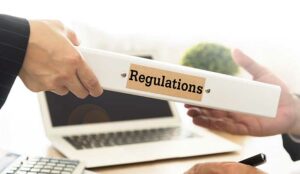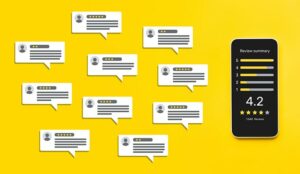Noel Lavery of Infobip inspects the current consumer trends impacting contact centres.
2021 has been a year of adjustment. The various lockdowns and social distancing requirements of 2020 accelerated the adoption of new technologies, and commerce trends that were on the horizon pre-COVID-19 were suddenly adopted at a brisk pace.
Online food ordering, restaurant delivery and curbside pickup became the norm – as did people searching for ‘loungewear’ or looking to buy their first puppy…
IMRG Capgemini’s Online Retail Results for January reveal that UK online sales grew 74% year-on-year in January 2021, which is the largest rate of growth since the start of the first lockdown in March 2020.
As a result, consumers’ preferences for brand interactions have changed. Likewise, since the pandemic, many retailers have rolled out new technologies to facilitate lockdown customer service. They will need to consider the sufficiency of these solutions when the high street re-opens.
It has been a year of uncertainty – but what we can be certain of is that the nation’s consumer is different. Understanding these changes will be key to gauging a better picture of what the consumer of 2021 looks like and how they want to shop. Failure to do so could severely damage the bottom line.
Customers Expect More
One thing is clear, UK shoppers expect a better customer experience (CX) post-Covid. Research from Infobip, conducted in 2020, revealed that a third of British consumers will never spend again with businesses that they felt provided bad customer service during lockdown.
Their biggest frustrations included waiting to speak with customer services (35%), limited ways and times to contact a company (31%) and repeating details multiple times to a customer service agent (20%).
But it won’t be good enough to simply avoid being ‘bad’ – the consumer of 2021 will be more demanding than ever before, with a third of UK consumers saying that they have higher expectations of customer service following lockdown.
Thankfully, it appears that many business leaders understand the need to evolve. As Gartner predicts: “Customer service is the biggest influencer of the customer experience…. Organisations will seek to transition from delivering only to customer service journeys, to becoming partners for life.”
Those businesses that get customer service right will reap the rewards – especially when more than half (54%) of UK consumers said they will purchase from businesses again if the service was positive.
Customers Are Mobile-First
Customers expect to be able to interact with brands quickly, seamlessly and on the platform of their choice. Salesforce argue that: “Understanding customers’ needs – and exceeding their expectations –are becoming table stakes for businesses to compete.”
They add that: “70% of customers say connected processes – such as seamless handoffs or contextualised engagement based on earlier interactions – are very important to winning their business.”
Organisations must be able to interact with their customers across a range of channels, such as online webchat, SMS, WhatsApp, mobile apps, and voice calls, and be able to deliver a great, personalised customer experience on each.
The consumer of 2021 is mobile-orientated, so by leveraging the smartphone, brands can bring great experiences directly to the consumer. Infobip research revealed that a third of Brits check their phone as soon as they wake up in the morning, and directly before they go sleep – confirming that this is the platform where they are most engaged.
Consequently, we’re likely to see brands explore new avenues to engage customers, such as sending personalised push notifications, using WhatsApp to handle customer queries, or something as simple as enabling people to pay for items through their digital wallet.
Customers Aren’t Afraid of New Channels
With the modern consumer expecting a better, quicker and more personalised customer experience – and favouring their mobile for this – we can expect to see businesses increasingly adopt Rich Communication Services (RCS) to deepen their interactions.
RCS messaging is the next generation of SMS – SMS 2.0 if you will. And according to the industry organisation for mobile network operators, the GSMA: “The biggest advantage of RCS is that it enables users to send rich, verified messages.”
“This means messages will be able to carry more information, so users can send things like photos, videos and audio messages to one another. Businesses will be able to use RCS Messaging to send boarding passes for airlines, package delivery notifications and credit card fraud alerts.”
This branded two-way communication makes it easy for companies to create app-like experiences all from the comfort and security of an SMS inbox, creating a more memorable experience and a stronger connection with customers. It’s most certainly a channel to watch this year.
The Customer Is Digital
The pandemic has made digital the baseline of communication over the past 12 months. But companies cannot rest on their laurels and expect to win customers over, just because they offer a digital solution. Neither will spamming consumers with unconnected messages.

Noel Lavery
To be relevant in 2021 and the years ahead, brands need to remember that they must be available on the channel customers want, when they want. And these interactions must be personalised and contextualised.
That means creating quality interactions across multiple platforms – SMS, WhatsApp, chatbot and voice – to create a true omnichannel experience.
Implementing and investing in this technology now will ensure that brands are ready to embrace the shopping habits of a customer profile which looks very different.
Author: Guest Author
Published On: 17th Apr 2021
Read more about - Guest Blogs, Infobip





































